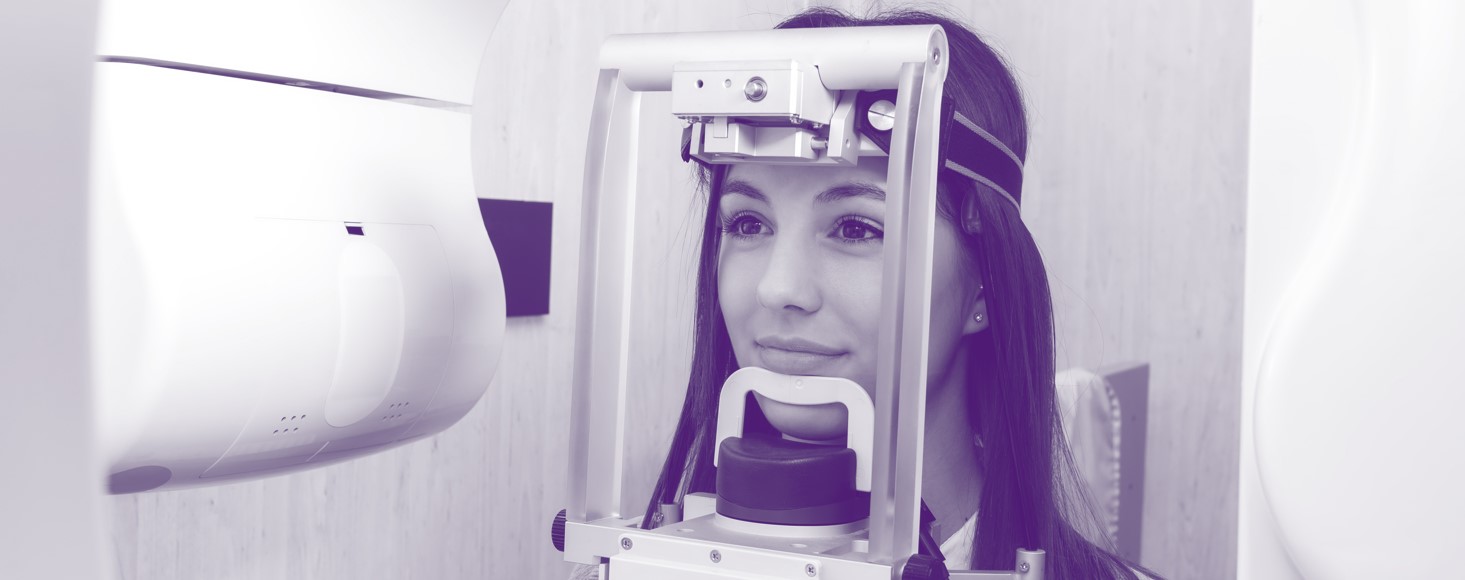
Dental imaging such as X-rays are often used as part of general dental examinations or in specialised investigation and diagnosis in dental practice. Any radiation exposure is very low level, and unlikely to have health effects.
Types of imaging you may encounter as part of your dental treatment include:
Bitewing X-ray
Provides a view of the surfaces between the teeth, beneath the surface of the tooth enamel as well as the level of bone surrounding the teeth. This is the most common dental imaging scan.
Panoramic X-ray Orthopantomogram (OPG)
Provides a view of the full mouth, including the jaw, teeth, sinuses and eye sockets. This scan is commonly used to review tooth development and wisdom tooth positioning, for planning orthodontic treatment, and to support the treatment of conditions impacting a wider area of the mouth.
Periapical X-ray
Provides a view of a whole tooth including the tooth roots and surrounding structures. This is a common dental imaging scan.
Lateral Cephalometric X-ray
Provides a profile/side-on view of the head and neck and is often used as part of orthodontic treatment.
Cone Beam Computerised Tomography (CBCT)
Produces a three-dimensional image of the teeth, bone and surrounding anatomy.
Each of these dental procedures includes a low level of exposure to radiation. In modern dentistry, X-ray doses are so low and well controlled that lead aprons are not usually (or routinely) required.
The below infographic shows the radiation exposure from dental X-rays compared with other sources of exposure in everyday life:

For more information please visit arpansa.gov.au or ada.org.au


